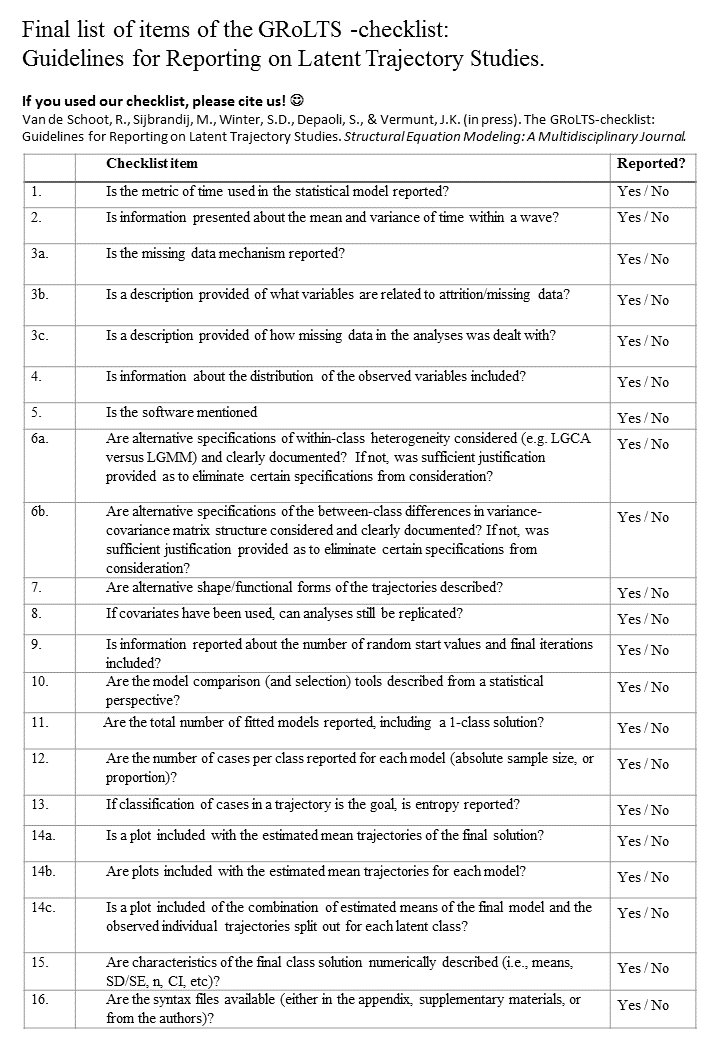Just Accepted: The GRoLTS-checklist; Guidelines for Reporting on Latent Trajectory Studies
Abstract
Estimating models within the mixture model framework, like Latent Growth Mixture Modeling (LGMM) or Latent Class Growth Analysis (LCGA), involves making various decisions throughout the estimation process. This has led to a high variety of how results of latent trajectory analysis are reported. To overcome this issue, using a four-round Delphi study, we developed Guidelines for Reporting on Latent Trajectory Studies (GRoLTS). The purpose of GRoLTS is to present criteria that should be included when reporting the results of latent trajectory analysis across research fields. We have gone through a systematic process to identify key components that, according to a panel of experts, are necessary when reporting results for trajectory studies. We applied GRoLTS to 38 papers where LGMM/LCGA was used to study trajectories of post-traumatic stress after a traumatic event.

Papers (%) fulfilling individual GRoLTS items. Note: total number of papers examined for systematic review is N=38, exact percentages given in green bar

Van de Schoot, R., Sijbrandij, M., Winter, S. D., Depaoli, S. & Vermunt, J. K. (2016). The GRoLTS-Checklist: Guidelines for Reporting on Latent Trajectory Studies. Structural Equation Modeling, 1–17. doi:10.1080/10705511.2016.1247646
PDF Additional Information


